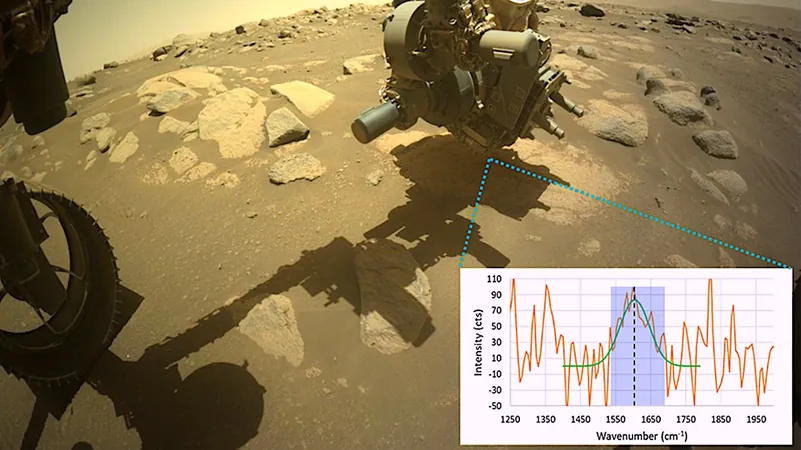
Unlocking Secrets of Mars: Breakthrough in Signal-to-Noise Ratio Calculations for SHERLOC Instrument
2025-04-21
Author: Nur
The SHERLOC Instrument: A Key Player in Mars Exploration
The SHERLOC (Scanning Habitable Environments with Raman and Luminescence for Organics and Chemicals) instrument aboard NASA's Perseverance rover is revolutionizing our understanding of Mars. This unique device, which employs deep ultraviolet Raman and fluorescence technology, is designed to map organic compounds and minerals on the Martian surface.
Tackling Noise in Spectroscopy: The Challenge
A major hurdle in analyzing data from SHERLOC is the challenge of distinguishing genuine signals from measurement noise. With low signal features in Raman spectroscopy, it's crucial to have accurate signal-to-noise ratio (SNR) calculations to validate the data.
Understanding SNR Calculations: A Necessity
Research highlights significant variances in SNR calculation methodologies found in Raman literature. To advance our ability to compare SNR values and optimize limit-of-detection (LOD) based on instrument characteristics, a deeper understanding of these methods is essential.
Groundbreaking Findings: Multi-Pixel vs. Single-Pixel Methods
In a comprehensive study, various methods for calculating SNR were compared using a standardized SHERLOC data set. The results were striking: multi-pixel methods, which leverage data from the entire Raman bandwidth, consistently outperformed single-pixel methods that rely on a solitary pixel. This advantage allows for the detection of spectral bands much earlier and more reliably.
What This Means for Science and Mars Exploration
This research is a game-changer for spectroscopy as it reveals significant discrepancies between different SNR calculation techniques. The implications are profound: researchers can no longer assume equivalency among SNR methods across studies. Multi-pixel techniques enhance the detection of spectral features, underscoring their superiority over single-pixel approaches.
A Historic Confirmation of Organic Carbon on Mars
Notably, this study corroborates a previous SHERLOC signal, believed to represent the first Raman detection of organic carbon on the Martian surface, opening new avenues for astrobiological exploration. As we continue to assess our neighboring planet, advancements like these play a crucial role in deciphering Mars' mysteries.
 Brasil (PT)
Brasil (PT)
 Canada (EN)
Canada (EN)
 Chile (ES)
Chile (ES)
 Česko (CS)
Česko (CS)
 대한민국 (KO)
대한민국 (KO)
 España (ES)
España (ES)
 France (FR)
France (FR)
 Hong Kong (EN)
Hong Kong (EN)
 Italia (IT)
Italia (IT)
 日本 (JA)
日本 (JA)
 Magyarország (HU)
Magyarország (HU)
 Norge (NO)
Norge (NO)
 Polska (PL)
Polska (PL)
 Schweiz (DE)
Schweiz (DE)
 Singapore (EN)
Singapore (EN)
 Sverige (SV)
Sverige (SV)
 Suomi (FI)
Suomi (FI)
 Türkiye (TR)
Türkiye (TR)
 الإمارات العربية المتحدة (AR)
الإمارات العربية المتحدة (AR)